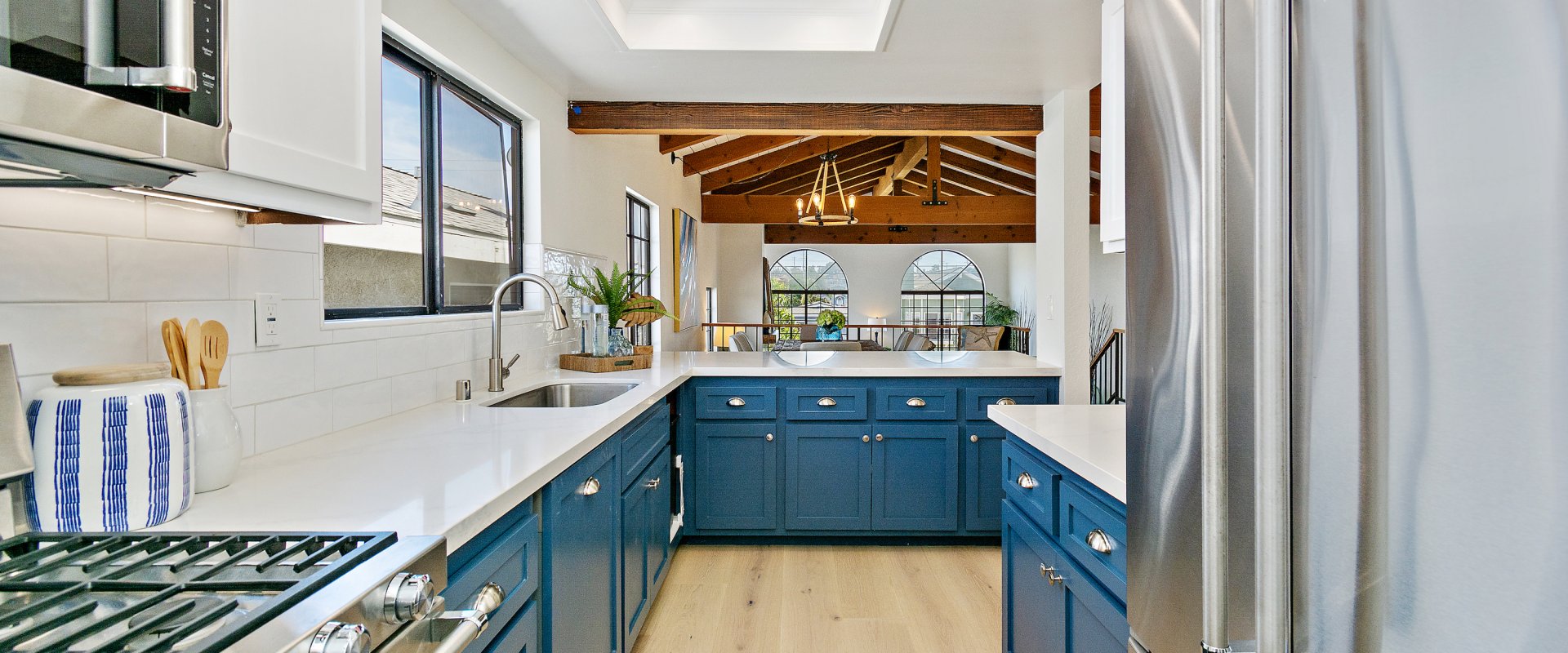Step by Step of how most Flippers do the math.
Hi, Bruce Bartlett with FlipGreat. A quick video here to let you know how to figure out what a Flipper will pay for your Fixer House, so take a look. If you have got any questions, let us know, reach out to us. we hope it is helpful, thanks
How to know what a Flipper will pay for your house in Los Angeles and pretty much every other part of the country too. Why listen to me? I used to be managing partners Sequoia Real Estate Partners we flipped whole bunch of houses, I was in the Wall Street Journal, Cover of the Los Angeles Business Journal, I speak at National Conferences and I’ve got 100% success rate. So, I know little bit about this.
So, here is you and you’ve got a fixer house, you’re going to sell to a Flipper and they’re going to fix it up and sell to someone else, but you want to know how much will they pay?
Well, what a Flipper will pay is simply the final price that they’re going to sell the house – less all their costs and their profit. So, what are all their costs?
Well, you’ve got sales costs, you’ve got insurance and taxes, property taxes, financing costs, renovations, repairs, investor cost, inspections, overhead, but the first thing you need to figure out is how much they can sell it for, okay, that is, what is ARV?
In the industry. ARV stands for After Repaired Value. Hey, it is what the house will actually sell for. Now, we wanted to sell for, hope we’ll sell for. It’s not the asking price. It’s what is you are actually you are going to get for it at the close of escrow. Again, it is not what we hope, it is was actually going to happen. Just be realistic here.
So, we look at the Comps in the neighborhood for very recently either flipped or updated homes, that other than those improvements are as close as possible to your property, okay. So, we’re looking at the size lot, location, the house size, bed & bath count, age, architecture, and the view. We don’t care about pools.
In regards to lot size, most valuable thing your house has is the dirt, in Southern California. So, if their lot is bigger or smaller, pay attention that’s going to affect value. Location, are you next to a 7-Eleven or are you in the middle of a Super Quaint Tree-lined Block, makes a difference. The house size, that’s pretty straightforward. That’s just a square feet, bed & bath count, you get it. Age, you get that. Architecture, hey some stuff is en vogue at times and then is not, midcentury in then it’s out, postmodern is in and then it’s out.
So is your house currently something that’s cool or not cool? That will affect the value. Do you have a view? That’s very important because in a neighborhood, you can have some houses that have views and some houses don’t. You can’t treat them the same, just like you could have a house on a busy street house, and a house it’s on a quiet street. even though they’re the same square footage in the same lot size, they’re not going to sell for the same price.
So, we take the average dollar per square foot for the upgraded similar product in your neighborhood and now you take that number and you multiply by the size of your house. Okay, this does not include Brand-New Construction. That’s a whole nother kettle of fish.
To keep the math simple in this situation, we’re going to assume that you did that math and ARV equals $1 million.
So, step 2, subtract the sales costs. In this case, the sales cost are realtor commissions, escrow cost, title cost, LA County transfer fees. Again, to keep it simple, we’re going to assume it’s right around 6.5%. So, we take that out now, down to $935,000.
Step 3, subtract the cost of the renovations and other expenses, okay. So, if a Flipper is buying a house, if all it needs is paint and carpet, well anybody can buy the house and do the paint and carpet, but a Flipper is not going to buy it. There is no money in it. They need to get something usually is in pretty bad shape, so they can really increase the value and make some money.
In this case, we’re going to assume that the house is 1750 square foot, and to do those types of improvements usually you can’t get away from spending anything less than $100 a square foot. So 1750×100, the cost to improve it $175,000. Now, this Flipper could have other costs too, financing costing, you know the lender fees, all that fun stuff, but just keep math simple, we’re going to assume all of that bundled together is the $175,000. So, we take out the $65,000 we take of $175,000 now we’re down to $760,000, he can pay for your house. But he has got to make some money, okay, she’s not a monk. She’s in this to make money, 15% generally is National Average of what people need to make on these projects or they’re not going to buy your house because it’s not worth the risk. So, in this case that’s $122,000. You take all of that out. What can they pay for your house $638,000. That’s how they do it. It’s just that simple and you can do that too. So, you’ll know what a Flipper will pay for it, before you talk to a Flipper. So, you’re not surprised when they offer you a number and you go, Oh my gosh! that’ so low. This is how it works.
They take the sale price, they back out the expenses, they back out their profit. This is where they end up. Okay, please be aware you and everyone else suffers from something called the Endowment Effect. The Endowment Effect is when you own something, it’s totally human, probably you’re overvaluing it. They do sociological experiments on this all the time and people overvalue that which they own. Okay, don’t take this personally. We all suffer from it. You can look it up. In this case, I just pulled it from this Investopedia. You can look it up on Wikipedia. But the big take away here, I highlighted in red down at the bottom is: Research has identified “ownership” and “loss aversion” as the two main psychological reasons causing the endowment effect.
Well, you think about the home being the most valuable asset anybody has, and in Southern California that’s probably far more expensive than in other parts of the country. I can’t think of anything causing more of an Endowment Effect than the home that they own in Southern California.
So long story short, you probably overvalue your house and possibly by quite a bit, okay. So, try to be realistic when you’re looking at the Comps, okay. Nobody loves your house as much as you do, nobody, okay. Nobody else has this problem because only you own your house, we just look at your house is an asset like a stock or bond or anything else, okay. We just don’t, we’re not that into your house, okay. If the price is not right, we can just go buy something else.
Now, this can cause problems in regards to Buyers and Sellers, okay or as I should say Flippers and Sellers, finding a price that they can both agree on. That’s one of the reasons why we created FlipGreat and at FlipGreat, we basically give away free money, no? Really.
So, we have a Fixer House here, but the owner has no money or time for repairs, okay. If he sells it to the Flipper. Well, the lender has to get paid, the investor Mr. Burns has to get paid, the Flippers have to make money. Now, as I said when they sell it’s 6.5%, but there’s also the 1.5% that the buyers are going to pay too. There’s always costs involved, and in the case of the Flippers, once they get the house there are going to incur all those costs all over again, okay.
So, at FlipGreat what we do is we make all this go away. We get rid of all of the waste, okay. Because wouldn’t it be 10 times simpler if Homer here could just sell directly to the Flanders. Because what we’re going to do is we’re going to fix up the house for Homer. He doesn’t have the time, he doesn’t have the money, he doesn’t have the expertise and in 30 days, we’re going to make the house look like this, so that he can sell it and make a heck of a lot more money and we’re going to share in the profit with him.
So, Homer does nothing, Homer spends nothing, Homer gets an extra $125,000 when he sells the house. Just by the way, in this model, we still use that million-dollar figure and not only he is going to do nothing, spend nothing and get an extra $125,000, he is going to sell it two weeks faster. Because that Fixer House is going to sit on the market for a while and then once it gets in the escrow, you’re going to have to argue about all the problems it has and how much of a discount, the buyer needs for those problems and that it may fall out of escrow because they’re not happy with that then it goes back on the market and then everyone’s looking at going wow, what’s wrong with that house that it fell out of escrow.
It can take a long time to sell a fixer, okay. Our houses typically sell in less than a week with multiple offers, almost always with offers over the asking price.
So, at FlipGreat, we renovate the house and prepped it for sale at $0 upfront cost to you. We pay for it. We do all the work. Those are real projects we’ve done. 30 days or less, you can use any realtor you want, as long it is not yourself, make more money when you sell. We split the increased value that we create with you. You sell faster. No hassles.
Oh, and if you don’t have one of these Fixer Houses, but you know someone who does, okay you can refer them to us and if they use the service and actually go through the process and close escrow. Escrow will send you $5000.
So that’s about it for today’s presentation. I hope it was helpful. If you have any questions, you can reach out to me via the website, email me, go to Facebook leave something there. Everybody stay safe, stay healthy, and I look forward to speaking to you in the future.


